Hardy, strong, and adapted to every environment. The primitive horse was small and agile, and today’s pony breeds owe much to them. Many pony breeds come from the native horses from Europe and Asia and changed very little through time.
Whether helping in mines, hauling loads, under saddle or as companion animals and pets, ponies have their place guaranteed in human society.
What exactly makes a horse a pony is up to debate. The International Federation of Equestrian Sports defines “pony” as a horse just a little under 14.2 hh (148 cm or 58.27 in), without shoes.
Still, several small horse breeds mature at such height and even less, and still earn the name “horse” rather than a pony. Examples are the Icelandic Horse and the Fjord, both considered horses in spite of being pony-sized. The distinction then draws to temperament and use, as well as the general look of the horse.
Thumbelina, the Smallest Horse in the World
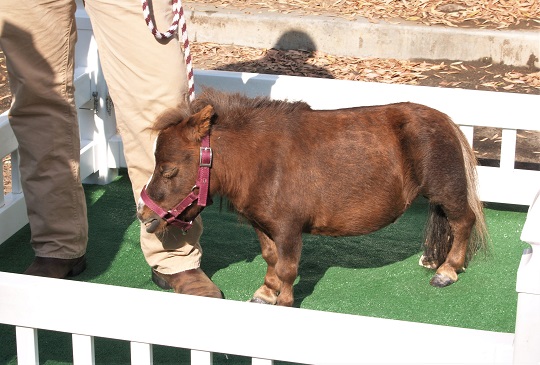
Miniature horses are, by nature, quite small. Thumbelina manages to be even smaller. Standing at 17 in (43 cm), this little mare earned a Guinness World Record for smallest horse alive.
Her extremely small stature is due to a physical condition called dwarfism. As in other species, dwarfism makes her exceptionally small, even among others of her breed, although it does come with a price.
Dwarfism in horses often causes conformation problems, such as shorter-than-normal legs, deformed skulls and wider barrels. This can cause ongoing complications on horses and can be quite debilitating.
This doesn’t make Thumbelina any less special or active, however. Fortunately, in spite of some conformation issues and her small size, she is quite healthy and relatively sound. Thumbelina goes on tours around the U.S., and has even met Big Jake, the world’s tallest living horse.
Einstein, the Smallest Stallion in the World
Thumbelina is quite small, but she’s not without contenders: Einstein, another Miniature Horse, this from New Hampshire, was born even smaller than Thumbelina.
Unlike her, however, Einstein does not have dwarfism and is a perfectly healthy Miniature Horse. In time he grew to be taller than her, but still is the smallest stallion in the world.
Born only 14 in tall (35 cm), he was small even compared to his parents, both normal-sized Miniature Horses. As a two-month-old foal, Einstein had a spinal injury treated by a canine veterinarian, as he was too small for an equine vet to operate on. Even as an adult, he is about the size of a Golden Retriever.
Here are the 5 Smallest Horse Breeds 5. Noma Pony
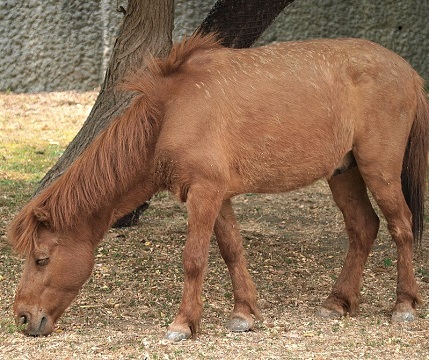
Credit: OpenCage.com
Included in our list of Japanese horse breeds, the Noma Pony is extremely rare. The name refers to one of their original homes, in the Noma County of the Aichi Prefecture of Japan.
Although this small horse breed is centuries old, coming from Mongolian horses from the 17th century, at one point, as few as six ponies remained, although the numbers increased slowly over time.
Breeding programs in the early 20th century, with the goal of creating better war horses, introduced Thoroughbred blood to the Japanese horses, including the Noma, and for some time it was illegal to breed small horses. This led to the Noma’s almost extinction, as adult Noma ponies stand around 10.1 hh (40.4 in / 102 cm).
Thankfully, a breeding society established in 1978 took steps to preserve them, to relative success. They are very pure, as the people from Noma do not crossbreed with other horses, and slowly growing in numbers.
4. Guoxia
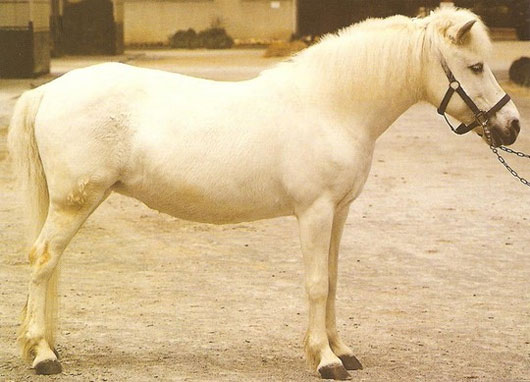
10 hands (40 inches / 101 cm) in height and extremely rare, the Guoxia is one of the few known breeds native to China and the smallest horse breed in the country.
Their name roughly translates to “under the fruit tree”, likely due to their use in orchards. The ponies would stand under the fruit trees as the farmers picked them and put them in baskets, which the ponies carried. This breed was thought extinct up until 1981 when some ponies reappeared.
In appearance, the Guoxia has a very primitive type, with a small head and ears and a straight back, as well as a short neck. They are bay, grey and roan. They come from Jingxi, Debao and Tyanyang counties in China. Like other small ponies, they’re particularly good for children’s riding and driving. They’re quiet and good in rocky environments.
Did you know? There are statues believed to show Guoxia horses from 2000 years ago.
3. Shetland Pony
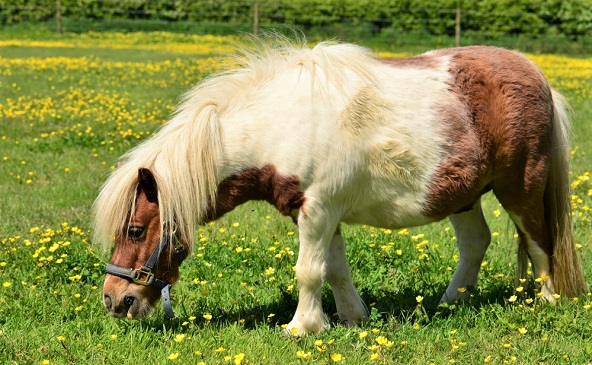
Alagz/Shutterstock.com
Small ponies existed in the Shetland Isles of Scotland as far back as the Bronze Age. Crossbred with Norse and Celtic horses, these animals endured the harsh climates and conditions of the isles for centuries.
Being being a mixture of ancient tough horse breeds made them extraordinarily strong and resilient horses able to do farm work, pull carts of peat and coal, and work in mines. It was only in 1890, however, that the Shetland Pony Studbook Society appeared, to improve the quality and standardize the breed.
Today, the Shetland Pony keeps all of its strengths. The Shetland Pony is often considered the strongest breed of horse in the world, as it’s capable of carrying enormous weighs in proportion to its size — sometimes twice as much as their own weight. This makes it proportionally stronger than many draft horses, even though it’s one of the smallest horse breeds in the world.
Shetlands today are popular as children’s riding ponies, as well as driving. Racing is, surprisingly, also popular in the breed, although less common. They are brave but gentle, and very intelligent — which can sometimes make for cheeky and spirited animals.
Shetlands have two standard sizes, with a maximum height of 42 in (104 cm), with ponies under 34 in registered as Miniatures, and ponies over that height as Standard.
Did you know? Shetland ponies would graze on seaweed during the winter, due to lack of available forage.
2. Miniature Horse
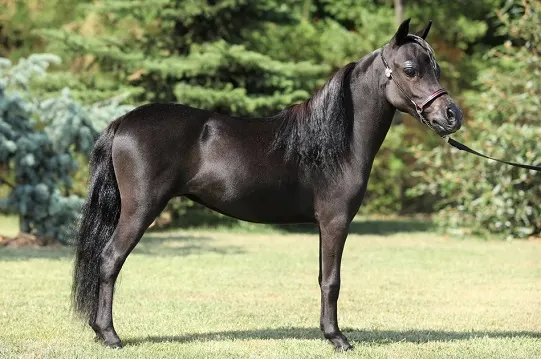
Zuzule/Shutterstock.com
The Miniature Horse delivers on its name and is one of the smallest horse breeds in the world. Standing at roughly 86 – 97 cm (34 – 38 in), the Miniature Horse is very popular around the world.
Small though they are, these ponies have a quite long history. Miniature Horses exist since the 1600s, where they occupied their place as pets for the nobility and the rich, and in the 1700s, helped in coal mines.
Hardy and strong, Miniature Horses frequently outlive their full-sized counterparts, often reaching 35 years old.
Their size does come with a price, as it causes difficulties in breeding and can lead to overbites and underbites (due to the small size of their jaws, compared to the same number of teeth). Another risk is overfeeding. This is a serious risk, as combined with dental issues, it may cause colic — every horse owner’s nightmare.
Miniature Horses today are popular as pets and companions for other, larger horses and other livestock, but they’ve quickly earned a niche as a guide and assistance horses for the blind and disabled. As they live longer, they’re certainly a good choice, although they do come with restrictions.
In spite of their sizes, Miniature Horses are horses and have all the instincts and issues a normal-sized horse has. This can cause difficulties for guide animals, such as boarding taxis and staying in hotels.
They aren’t just pets, however: there are Miniature Horses competitions for in-hand showing, jumping and cart driving. These may include weighs or even sleighs, in teams or alone.
Miniature Horses (sometimes simply ‘Minis’) vary greatly around the world, in shape and general look. It isn’t quite a breed, so much as it’s a registry for ponies in a height range.
This may include specific breeds such as Falabellas and Shetlands and a huge diversity of shapes and colors from country to country. There’s even some contention on whether these diminutive animals are horses or ponies!
1. Falabella
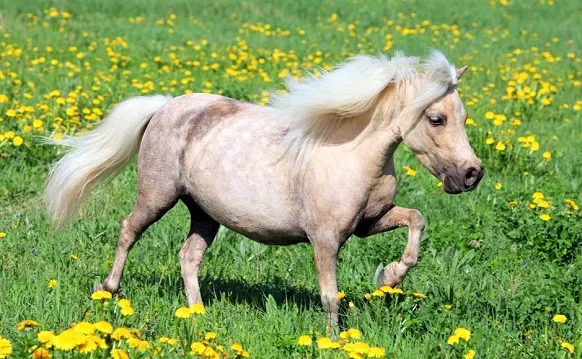
horsemen/Shutterstock.com
The Falabella is the smallest horse breed in the world. Often counted under Miniature Horse registries, the Falabella stands 71cm to 86cm tall (21 to 34 in) which makes it smaller than most Miniature Horses.
In spite of its size, however, this small horse breed sports “horse” proportions rather than “pony” proportions. They often have the cob-type look of ancestral breeds Shetland and Welsh Pony. Going back to the 1800s, this Argentinian breed has strong influence from the Iberian horses of the region as well, in special the Criollo horse.
Hardy and adaptable, the Falabella lives in every environment, sometimes much better than a full-sized horse. They are surprisingly docile and gentle, even when living in rustic conditions.
Did you know? Falabella ponies have seventeen vertebrae instead of eighteen, and at least one less pair of ribs.
Also read:
Top 8 Oldest Horses in History20 Best Horse Movies of all TimeTop 10 Rare Horse Breeds7 Biggest Horses and Horse Breeds
Source: horseyhooves.com








